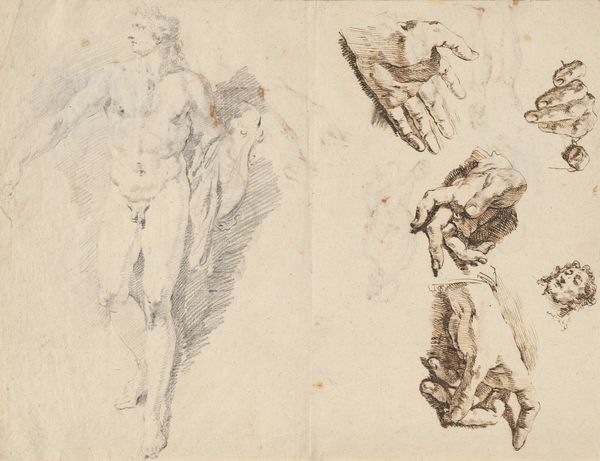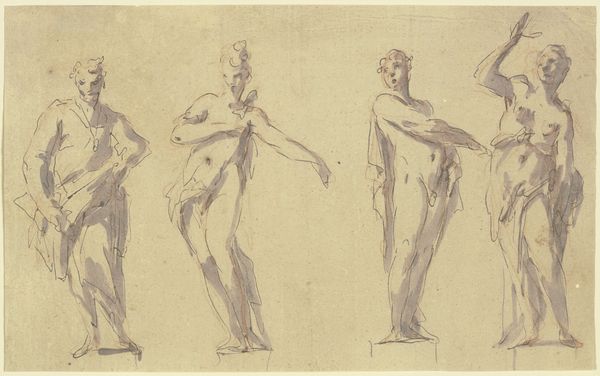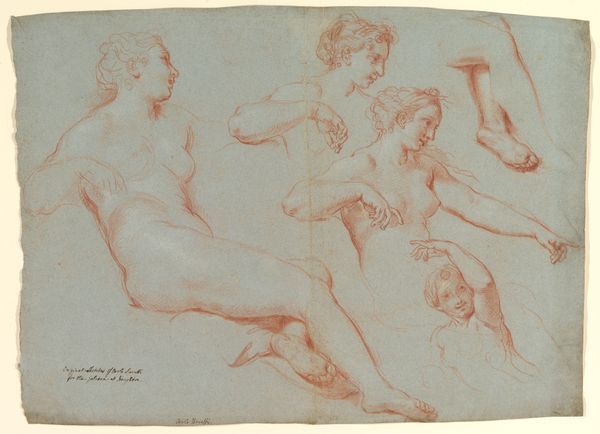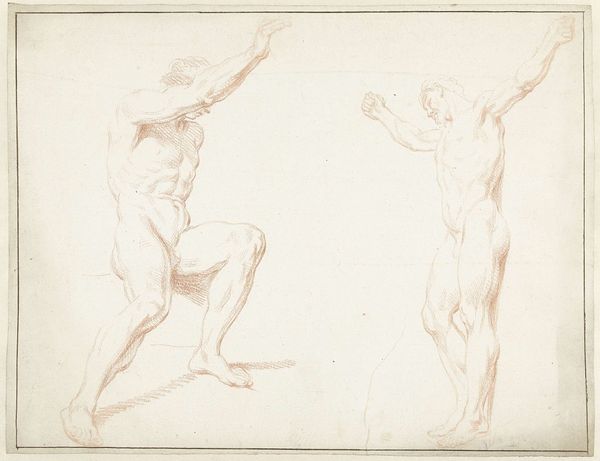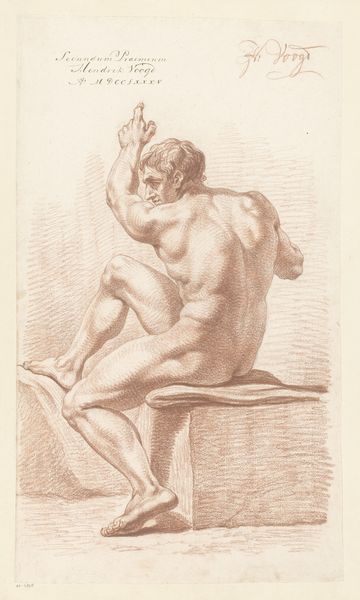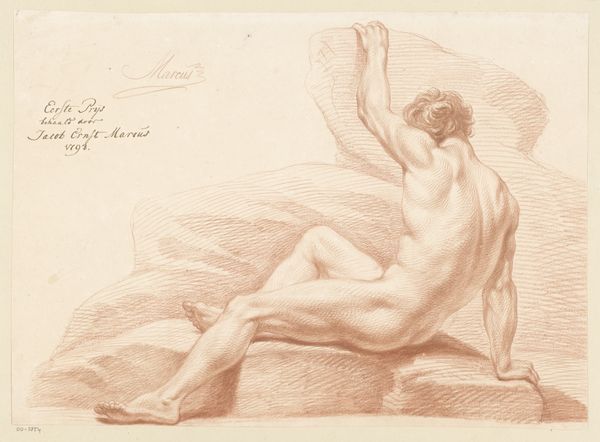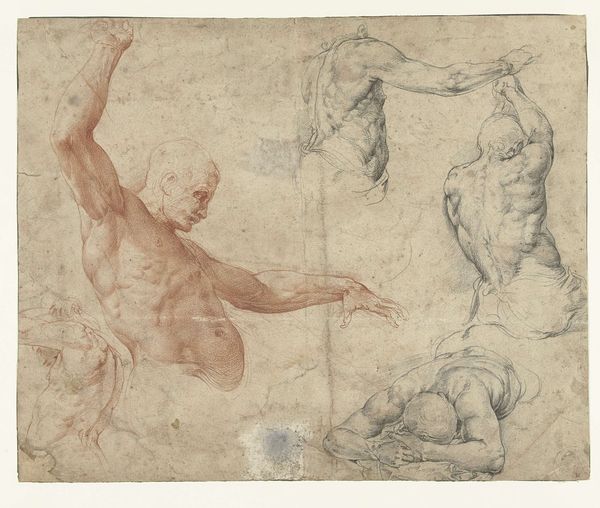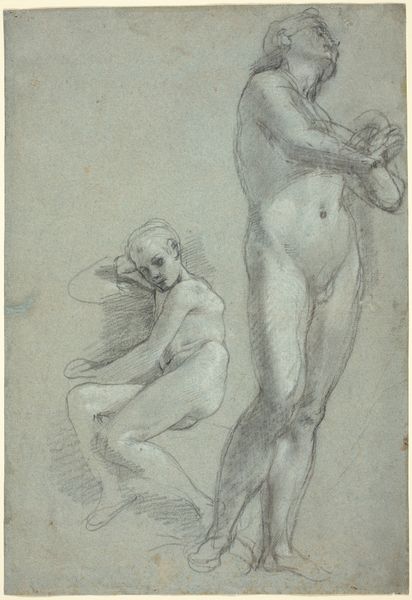
Studien aus der Sixtinische Kapelle des Michelangelo nach Kupferstichen gezeichnet c. 1809 - 1811
0:00
0:00
drawing, ink
#
drawing
#
16_19th-century
#
pencil sketch
#
figuration
#
11_renaissance
#
ink
#
13_16th-century
#
history-painting
#
academic-art
Copyright: Public Domain
Editor: Here we have Peter Cornelius’ "Studies from Michelangelo’s Sistine Chapel Drawn After Copper Engravings", created sometime between 1809 and 1811. The ink and pencil give it a rather ethereal, almost dreamlike quality. What stands out to you in this work? Curator: What grabs me is the act of reproduction itself. Cornelius wasn't simply depicting figures; he was copying engravings of Michelangelo’s frescoes. It makes me consider the complex chain of representation. How does the act of copying reinforce or subvert the power dynamics inherent in artistic canons? Editor: That’s a good point. So, is it about deconstructing the artistic authority of Michelangelo? Curator: Not necessarily deconstructing, but perhaps democratizing it, or at least examining its role in shaping artistic training and taste. These copies served as a means of disseminating and internalizing the “master’s” style. The emphasis on the male nude also places it within the context of a highly gendered art historical tradition. Editor: I see what you mean. The male form is so idealized here, it almost feels… performative. Curator: Exactly! And think about the role of the "antique" in constructing masculinity, then consider the absence of the female form in this study. Who gets to participate in this dialogue with the past, and whose voices are excluded? How does it inform contemporary discussions of gender and representation in art? Editor: It is fascinating how many layers of meaning exist in what seems to be a practice drawing. I guess, by copying, Cornelius both reinforced and questioned the canon. Curator: Precisely. It's a powerful reminder that art is never created in a vacuum.
Comments
No comments
Be the first to comment and join the conversation on the ultimate creative platform.
